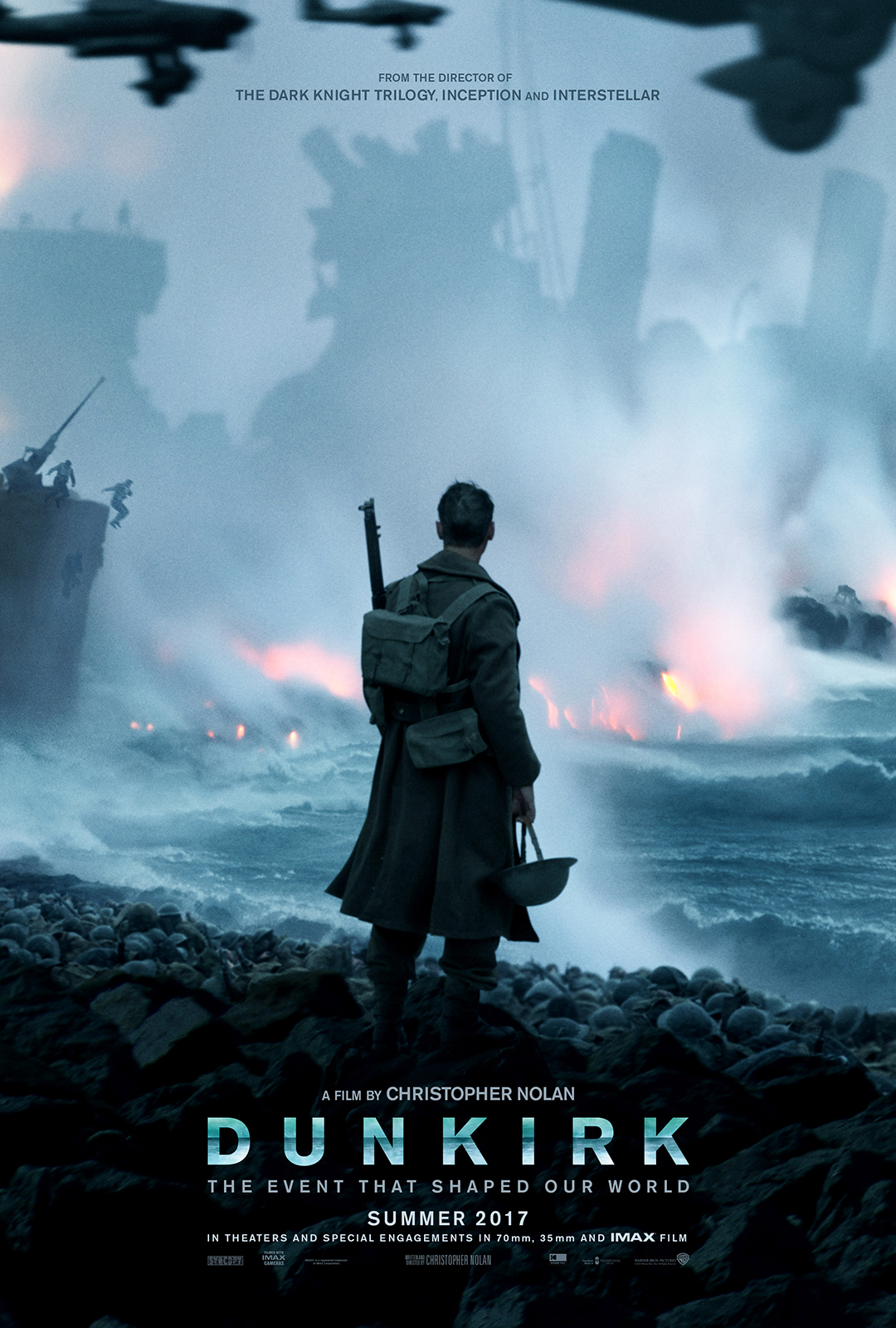The term “visionary director” gets tossed around maybe a little more than it should; seemingly anytime a director does something a little creative or a bit off the beaten path, he or she earns the label. Christopher Nolan, however, has proven time and time again that he’s worthy of it. From 2000’s Memento through 2014’s Interstellar, he has never made a “normal” movie. In each of them, including his 2005-2012 Dark Knight trilogy, he takes what could have been a relatively straightforward story and turns it on its head.
Is it any wonder, then, that Dunkirk does the same? Shame on me for walking into the theater expecting a linear telling of the story—how 300,000 British troops were rescued from a certain German slaughter by a flotilla of locals who skirred across the English Channel to Dunkirk, France, in the middle of a war.
Not even close.
Told from three different perspectives—land, sea, and air—Dunkirk is an eloquent and mesmerizing masterpiece. We’re told at the outset that each chapter takes place over a different amount of time (land: one week, sea: one day, air: one hour), and then Nolan (who also wrote the screenplay) proceeds to mesh them all together into a single time-bending, two-hour bit of brilliance.
At the outset, we watch as a handful of British soldiers are picked off one-by-one by unseen German snipers in the Dunkirk streets. The lone survivor is Tommy (Fionn Whitehead), who escapes down an alley and erupts onto the beach where thousands of Allied soldiers are lined up waiting for a salvation that isn’t coming.
In England, the Royal Navy has begun commandeering private boats to use for the rescue mission, but before they can take his, Mr. Dawson (Mark Rylance) casts off for Dunkirk himself, taking his teenaged son and friend with him.
Meanwhile above the sea, Royal Air Force pilot Farrier (Tom Hardy) is part of a three-plane squadron headed for France to provide air support. After one plane is shot down and the other is forced to ditch into the ocean, Farrier continues the mission on his own.
All three stories have their own separate dramas and suspense, and though they take place over vastly different time spans, Nolan somehow manages to interweave them into a compelling, united film.
By making Dunkirk about the individuals and not about the moment (especially since even cursory students of history know the ending), we get dropped into an overwhelming situation, the likes of which haven’t been seen since Saving Private Ryan. The end result may be clear, but Nolan makes sure to keep us on the edge of our seats with respect to the fictional people to whom we’ve been introduced.
Adding to the genius of the finished product is cinematographer Hoyte van Hoytema (Interstellar) and composer Hans Zimmer (The Dark Knight trilogy). Van Hoytema’s outstanding, in-the-thick-of-it camera work elevates Dunkirk to rare air, as does Zimmer’s hypnotic and tension-building score. At no point does Dunkirk feel like a simple “war movie”.
Nolan first came up with the idea of a Dunkirk-based movie more than two decades ago, but he wanted to hold off until he had collected the experience he knew was required to match his original concepts. Film-making doesn’t get much more visionary than that.
Rating
5/5 stars
